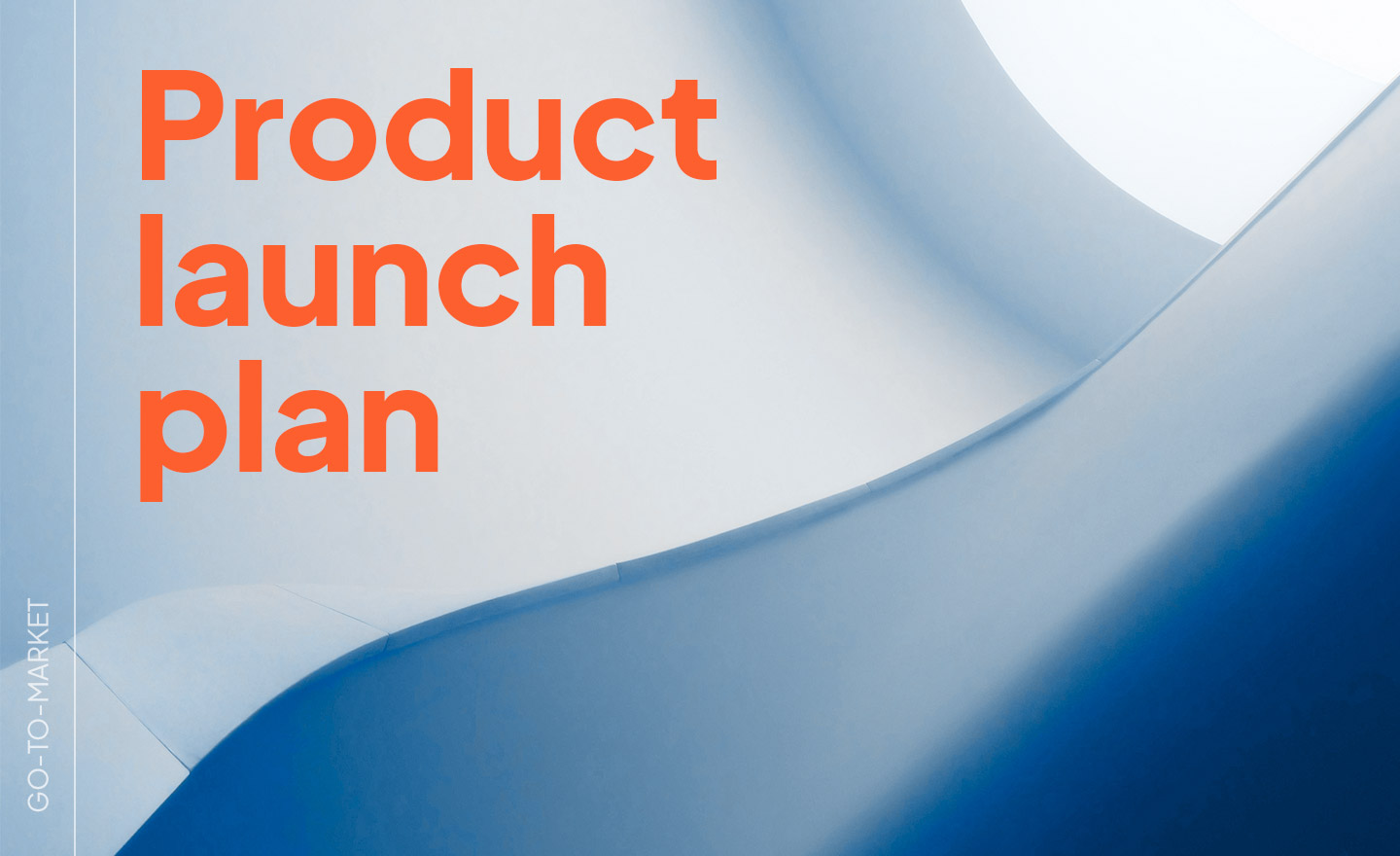A well-planned product launch can distinguish between success and failure in today’s highly competitive marketplace.
A strategic product launch plan ensures you capture your target audience’s attention and effectively communicate your product’s unique value. This blog post will walk you through the essentials of building a launch strategy that meets your business goals and makes a lasting impact.
FAQ
What are the 7 steps of product launch?
The seven steps typically include market research, product development, testing, positioning, creating a marketing strategy, setting a launch timeline, and executing the launch while monitoring performance.
What are the three types of product launches?
The three main types of product launches are soft launch (limited release), hard launch (full-scale release), and internal launch (release within the company to test and gain feedback).
What should be in a product launch plan?
A product launch plan should include market research, product positioning, key messaging, a marketing and sales strategy, a timeline, budget, goals, and post-launch evaluation metrics.
What are the 4 Ps of product launch?
The 4 Ps are Product (what you are launching), Price (pricing strategy), Place (distribution channels), and Promotion (marketing efforts to reach your target audience).
What are the five steps to launching a product?
The five steps include conducting market research, developing the product, crafting a marketing strategy, setting a timeline, and executing the launch.
What is a new product launch strategy?
A new product launch strategy outlines introducing the product to the market, covering aspects such as positioning, pricing, target audience, marketing channels, and how to differentiate from competitors.
What is a product launch sequence?
The product launch sequence is a series of coordinated steps, from product development to market research, marketing, distribution, and the official launch.
What is a product launch map?
A product launch map is a visual representation or timeline that outlines each stage of the product launch process, from pre-launch preparations to post-launch activities.
How to create a product launch deck?
To create a product launch deck, include the product overview, market research, unique selling proposition, target audience, marketing and sales strategies, launch timeline, budget, and projected goals.
Create your online store in minutes!
Looking to sell online? Develop and launch your store with 10Web AI Ecommerce Website Builder.
Product launch plan fundamentals
A product launch plan helps bring new items to market. It covers key steps from start to finish. There are different ways to launch products depending on goals and resources.

Understanding product launch plans
A product launch plan maps out how to introduce a new item to buyers. It includes research, strategy, and marketing. The plan sets goals and timelines. It also picks target customers.
Product launches need careful planning. Teams must work together on many tasks. These include making the product, testing it, and telling people about it. A good plan helps avoid problems and boosts success.
Types of product launches
There are three main types of product launches. A minimal launch tests an early version with a small group. It helps find issues before a bigger release.
A soft launch reaches more people but keeps things low-key. It lets you fix any last problems. A full-scale launch is a big public debut. It uses lots of marketing to get attention.
Each type has pros and cons. The right choice depends on your product and business needs. Some companies use all three types as they roll out a new item.
Market analysis and research
Learning about your market helps you make smart choices for your product launch. Good research clearly shows who might buy your product and why.
Identifying target market
Who are your ideal customers? Think about their age, gender, income, and location. Look at their habits and what they like to do. This info helps you make a product they’ll want.
Use surveys and social media to learn more. Talk to people who might use your product. Ask what they need and what problems they face.
Look at who buys products like yours. This can give you good ideas about your target market.
Analyzing market segment
Break your target market into smaller groups. This helps you focus your efforts. You can group people by things they have in common.
Look at each group’s size and how much they might spend. See which groups are growing and which aren’t.
Find out what each group cares about most. This helps you make your product and ads just right for them.
Validating product-market fit
Make sure your product solves a real problem for your target market. Show your product to potential customers. Get their honest feedback.
Use this feedback to improve your product. Keep testing and tweaking until people love it.
Look at how people use your product. See if it fits into their daily lives. If it does, you’re on the right track.
Check if people are willing to pay for your product. This is a good sign that you’ve found a fit.
Product launch planning
A good product launch plan covers key areas like timelines, strategies, and goals. This helps set your new product up for success right from the start.
Developing a launch timeline
Your launch timeline maps out all the steps needed to bring your product to market. Start by working backward from your target launch date. Include major milestones like:
- Finishing product development
- Starting marketing campaigns
- Training sales and support teams
- Setting up distribution channels
Break big tasks into smaller action items with clear deadlines. Assign owners to each task. Build in extra time for delays or issues that may come up.
Review your timeline often and adjust as needed. A flexible plan helps you stay on track even when things change.
Crafting a go-to-market strategy
Your go-to-market plan outlines how you’ll introduce your product to customers. It covers key areas like:
- Target audience – Who will buy your product?
- Pricing – How much will it cost?
- Sales channels – Where will people buy it?
- Marketing – How will you promote it?
Research your market and competitors. Find out what customers want and need. Use this info to shape your product messaging and features.
Test your ideas with a small group before the full launch. This helps you fine-tune your approach.
Setting launch goals
Clear goals help you measure the success of your launch. Some common goals are:
- Number of sales or sign-ups
- Revenue targets
- Market share
- Customer feedback scores
Make your goals specific and measurable. For example, “Get 1,000 new users in the first month” is better than “Gain lots of users.”
Set both short-term and long-term goals. This helps you track progress over time. Be ready to adjust your goals based on early results.
Product management tactics
Product management tactics help launch products successfully. These methods focus on features, positioning, and team roles.
Product features and positioning
Start by listing key product features. Think about what makes your product unique. Compare it to other options in the market. This helps you find your product’s strengths.
Choose a clear position for your product. Decide how you want customers to see it. Is it the cheapest? The fastest? The easiest to use? Pick a position that fits your product and appeals to your target customers.
Test your product with real users. Get their feedback on features and design. Use this info to make your product better before the launch.
Responsibilities and roles
As a product manager, you lead the launch process. Your job is to keep everyone on track and working together.
Make a list of tasks for the launch. Give each task to the right team member. Some common roles are:
- Marketing team: Creates ads and content
- Sales team: Prepares to sell the new product
- Support team: Gets ready to help customers
- Tech team: Makes sure the product works well
Set clear goals for each team. Give them deadlines for their tasks. Check in often to make sure work is getting done.
Plan how teams will share updates. You might use daily stand-up meetings or a project management tool. Good communication helps avoid problems and keeps the launch on schedule.
Defining the value proposition
A value proposition is key to a successful product launch. It tells customers why they should buy your product. Your value proposition needs to be clear and strong.
To create a good value proposition:
- Know your target audience
- List your product’s main benefits
- Explain how your product solves customer problems
- Show what makes your product unique
Think about what sets your product apart from others. This could be better quality, lower price, or new features. Make sure to focus on the things that matter most to your customers.
Your value proposition should be short and easy to understand. Use simple words and avoid jargon. You want customers to quickly see why your product is worth buying.
Test your value proposition with real customers before your launch. This helps make sure it speaks to their needs and wants. You can use surveys or focus groups to get feedback.

Marketing and messaging strategy
A good marketing and messaging strategy helps you reach customers and tell them about your new product. It focuses on what to say and where to say it.
Developing effective messaging
Start by thinking about your product’s benefits. What problems does it solve? How is it better than other options? Write down 3-5 key points that make your product stand out. Use simple words that your target customers will understand.
Make your message easy to remember. Try using a catchy slogan or tagline. Test different versions with a small group to see which one works best. Keep your message the same across all marketing materials.
Be clear about who your product is for. Explain how it fits into their lives. Use stories or examples to show how it can help them.
Selecting marketing channels
Pick the right places to share your message. Think about where your target customers spend time. Some options include:
- Social media (Facebook, Instagram, Twitter)
- Email marketing
- Blogs and websites
- Online ads
- TV or radio ads
- Print ads in magazines or newspapers
Try a mix of different channels. This helps you reach more people. Start with 2-3 channels that fit your budget and audience best.
Make a plan for each channel. Decide what content to share and how often. Set goals for each one, like getting new followers or website visits. Keep track of what works and adjust your plan as needed.
Building a sales funnel
A sales funnel guides potential customers through the buying process. It starts with getting people’s attention and ends with making a sale. Let’s look at key parts of building an effective funnel.
Designing a landing page
Your landing page is often the first thing people see. Make it eye-catching and simple. Use a clear headline that tells visitors what you’re offering. Add a short description of your product’s main benefits. Include pictures or videos to show how it works.
Put an easy-to-find sign-up form or a Buy Now button on the page. Don’t ask for too much info – just what you need to follow up. Make sure the page loads fast on all devices. Test different versions to see what works best.
Use customer reviews or testimonials to build trust. Add a FAQ section to answer common questions. Make it easy for people to contact you if they need more help.
Customer acquisition strategies
To get new customers, you need to reach them where they are. Use social media ads to target people interested in your type of product. Write blog posts that solve problems related to what you’re selling. This can help people find you through search engines.
Try email marketing to share useful info and special offers. Partner with other businesses or influencers to reach their audiences. Offer a free trial or sample to let people try before they buy.
Use pay-per-click ads to show up when people search for related terms. Make short videos explaining your product for platforms like YouTube or TikTok. Host webinars or live Q&A sessions to connect with potential customers directly.
Customer retention tactics
Keeping customers is just as important as getting new ones. Send a welcome email series to help new buyers get the most from your product. Offer great customer service through multiple channels like chat, email, and phone.
Create a loyalty program to reward repeat purchases. Send personalized offers based on what customers have bought before. Ask for feedback and use it to improve your product and service.
Share helpful tips and tricks to use your product better. Celebrate customer milestones or anniversaries. Surprise loyal customers with special discounts or early access to new items.
Fix problems quickly when they come up. Keep in touch with a newsletter about new features or products. Make it easy for happy customers to refer their friends.

Create your online store in minutes!
Looking to sell online? Develop and launch your store with 10Web AI Ecommerce Website Builder.
Promotion and outreach
Getting the word out about your new product is key to a successful launch. You’ll need to create eye-catching materials, work with the media, and team up with influencers to spread the message.
Creating promotional materials
Make flyers, brochures, and social media posts showing your product. Use bright colors and clear photos to grab people’s attention. Write short, snappy headlines that explain what your product does. Include a call to action like “Buy now” or “Learn more” so people know what to do next.
Create a video that demonstrates how to use your product. Keep it under 2 minutes and focus on the main benefits. Share the video on YouTube, your website, and social media.
Design eye-catching packaging if you’re selling a physical item. The box or wrapper should match your brand and stand out on store shelves.
Managing media coverage
Reach out to reporters and bloggers who cover your industry. Write a press release with the key facts about your product launch. Include:
- Product name and description
- Launch date
- Pricing
- Where to buy
- Quote from company leader
Follow up by phone or email to see if they need more info. Offer product samples or demos to get them interested in writing about you.
Set up interviews with your CEO or product manager. Coach them on key talking points to highlight during media chats.
Influencer collaborations
Find social media stars whose followers match your target market. Look for influencers with high engagement, not just big follower counts.
Give them free products to try and share with their fans. Ask them to post honest reviews or tutorials showing how to use your item.
Work with influencers to create unique discount codes for their followers. This helps you track which influencers drive the most sales.
Consider hosting an influencer event where they can try your product in person. This gives them content to share and builds buzz for your launch.
Pricing and financial planning
Setting the right price for your new product is key. You need to pick a pricing model that fits your business and customers.
Some common models are:
- One-time purchase
- Subscription
- Freemium
- Pay-per-use
Think about your costs when choosing a price. Add up how much you spend on making and selling the product. Don’t forget about marketing costs too. Your price should cover these costs and leave room for profit.
Look at what your rivals charge. This helps you see what customers expect to pay. But don’t just copy their prices. Your product might offer more value or have unique features.
Make a sales forecast. Guess how many units you might sell in the first month, three months, and year. Use this to plan your budget and set goals.
Set aside money for launch costs. You’ll need funds for things like:
- Ads and marketing
- Extra staff
- Inventory
- Tech support
Plan for different scenarios. What if sales are slower than expected? Or what if demand is higher than you thought? Have backup plans ready.
Keep checking your finances after launch. You may need to adjust your price or spending based on how well the product does.
Monitoring and metrics
Tracking the right numbers helps you see if your product launch is working well. Let’s look at how to pick good metrics and keep an eye on them.
Defining KPIs for success
Pick metrics that match your goals for the launch. Good KPIs are specific and easy to measure. Some common ones are:
- Number of new users
- Sales in the first month
- Customer feedback scores
- Website traffic
Set clear targets for each KPI. For example, “Get 1000 new users in the first week.” This gives you a clear way to check your progress.
Make sure your KPIs cover different parts of the launch. Look at things like:
- How many people know about the product
- How many have tried it
- How many keep using it
- How much money it makes
Tracking product metrics
Once you pick your KPIs, you need to watch them closely. Use tools to collect data automatically. This saves time and helps you spot trends.
Key product metrics to track:
- Sign-up rate: How many people create accounts
- Activation rate: How many start using the product
- User engagement: How often people use key features
- Retention: How many users keep coming back
Check these numbers often, like daily or weekly. This helps you catch problems early. If a metric is low, you can try to fix it right away.
Set up a simple dashboard to see all your metrics in one place. This makes it easy to get a quick overview of how the launch is going.
Launching phase activities
A product launch involves three key phases: pre-launch, launch, and post-launch. Each phase has its own set of tasks and goals to make sure your product hits the market smoothly.
Executing the pre-launch phase
The pre-launch phase is when you lay the groundwork for success. Set clear, doable goals for your launch.
Learn everything about your product inside and out. Figure out who your target market is and what they need.
Make a timeline for your launch and stick to it. Get your team ready by giving them the info and tools they need. Start building buzz with some early marketing efforts.
Test your product thoroughly to catch any bugs. Set up customer support channels so you’re ready to help users from day one. Have a plan for how you’ll measure success after launch.
Managing the launch phase
The launch phase is go time. Put your marketing plan into action.
Send out press releases, post on social media, and run ads to spread the word.
Make your product available to buy or download. Keep a close eye on your website and sales channels to fix any issues fast.
Be ready to answer lots of questions from customers, the media, and maybe even investors. Have your team on standby to handle any problems that pop up.
Track your key metrics from the start. This will help you see how well you’re doing and where you might need to make changes.
Assessing the post-launch phase
After launch, it’s time to see how you did. Look at your sales numbers, user sign-ups, and other key stats. Compare them to the goals you set before launch.
Ask for feedback from your first customers. What do they like? What could be better? Use this info to make your product even better.
Keep up your marketing efforts to maintain momentum. Plan updates or new features based on what you’ve learned.
Think about what went well and what you’d do differently next time. Share these lessons with your team to improve future launches.
Evaluation and future growth
After launching a product, it’s important to check how it’s doing and plan for the future. This helps make sure the product keeps getting better and sells more over time.
Post-launch evaluation
Look at how your product is selling and what customers think about it.
Check sales numbers, customer reviews, and feedback from your support team. This tells you if people like the product and if it’s meeting their needs.
Make a list of things that are working well and things that need to get better. Maybe customers love a certain feature but find another one confusing. Use this info to make small changes that improve the product.
Ask your team for their thoughts, too. They might have ideas on how to fix problems or make things run more smoothly.
Setting goals for product growth
Now that you know how your product is doing, it’s time to plan for the future.
Set clear goals for where you want the product to go next. These could be sales targets, new features to add, or ways to reach more customers.
Break big goals into smaller steps. This makes them easier to work on and track progress.
For example, if you want to double sales in a year, set monthly targets to work towards.
Think about new markets or customer groups you could sell to. Maybe your product could be useful for a different type of business than you first thought.
Keep an eye on trends in your industry to spot new opportunities.
Summary
Whether preparing for a full-scale public launch or a softer introduction, understanding the key steps and types of product launches is crucial for aligning your efforts with measurable outcomes.
With the right approach, you’ll be positioned to generate buzz, capture new customers, and ultimately drive growth for your business.

Create your online store in minutes!
Looking to sell online? Develop and launch your store with 10Web AI Ecommerce Website Builder.



/cdn.vox-cdn.com/uploads/chorus_asset/file/25685860/prime_video_election_night_brian_williams.jpg.png)





